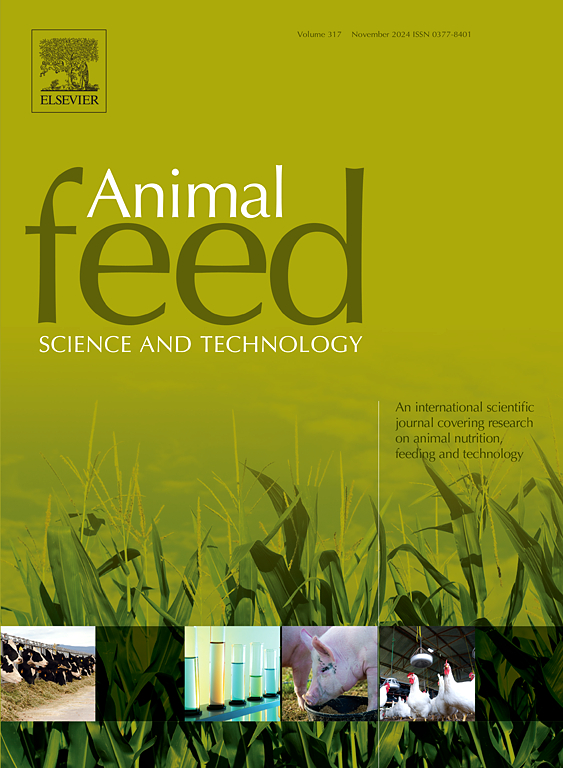Evaluation of two blue mussel fractions for their ability to alleviate anaemia and improve the performance in common sole (Solea solea L.)
IF 2.5
2区 农林科学
Q1 AGRICULTURE, DAIRY & ANIMAL SCIENCE
引用次数: 0
Abstract
The main goal of this study was to test whether dietary supplementation of fractions from blue mussels shows a similar ability to alleviate anaemia and improve the performance of common sole like ragworm and blanched mussels. In addition, this study aimed to link the antioxidant activity of the fractions towards their ability to alleviate anaemia in common sole and evaluate the effect of processing on contaminants in the developed fractions. The experimental set-up contained six diets in triplicate: fresh ragworm (RW), the positive control, blanched mussel (BM) as the control for the fractions, a formulated diet with either 15 % of fraction A (DA), B (DB) or a combination of both (DAB) and a commercial pellet (CPL), the negative control. All diets, except BM, were well eaten, and fish growth exceeded expectations. Haemoglobin (Hb) levels rose with 24 %, 35 %, 44 %, 59 % and 156 % compared to levels at the start of the experiment for fish fed BM, DA, DAB, DB and RW respectively, while Hb for fish fed CPL remained similar. Growth was highest for fish fed RW (2.23 ± 0.08 % BW/d), lowest for fish fed BM (1.09 ± 0.14 % BW/d), and similar for all pelleted diets (1.75 ± 0.10–1.82 ± 0.04 % BW/d). Diets RW, BM and DB alleviated anaemia in common sole. From the formulated diets, DB showed the highest potential in increasing Hb levels compared to BM and the diets DAB or DA, suggesting the compound(s) responsible for alleviating anaemia are concentrated in fraction B. In addition, the production processes for making the fractions and pelleting did not noticeably affect their ability to alleviated anaemia, indicating that these diets are a reliable and effective of promoting Hb levels in common sole. The antioxidant activity of the diets was not related to their ability to alleviate anaemia in common sole. Except for total dioxins and dl-PCBs, all contaminants were not exceeding corresponding EU maximum levels for feed materials. The high plasma vitamin B12 levels found in common sole compared to other fish species suggest a specific metabolic or physiological role of vitamin B12 in common sole. These findings can have significant implications for the culture of common sole.
求助全文
约1分钟内获得全文
求助全文
来源期刊

Animal Feed Science and Technology
农林科学-奶制品与动物科学
CiteScore
6.00
自引率
6.20%
发文量
266
审稿时长
3 months
期刊介绍:
Animal Feed Science and Technology is a unique journal publishing scientific papers of international interest focusing on animal feeds and their feeding.
Papers describing research on feed for ruminants and non-ruminants, including poultry, horses, companion animals and aquatic animals, are welcome.
The journal covers the following areas:
Nutritive value of feeds (e.g., assessment, improvement)
Methods of conserving and processing feeds that affect their nutritional value
Agronomic and climatic factors influencing the nutritive value of feeds
Utilization of feeds and the improvement of such
Metabolic, production, reproduction and health responses, as well as potential environmental impacts, of diet inputs and feed technologies (e.g., feeds, feed additives, feed components, mycotoxins)
Mathematical models relating directly to animal-feed interactions
Analytical and experimental methods for feed evaluation
Environmental impacts of feed technologies in animal production.
 求助内容:
求助内容: 应助结果提醒方式:
应助结果提醒方式:


